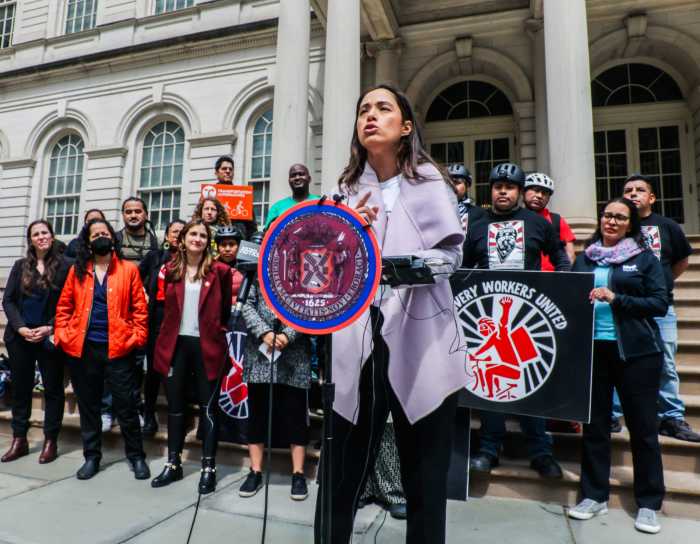
Excited live-cam followers of the red-tailed hawk were glued to their screens, watching the annual “fledging’’ of adolescent raptors take their first flight Friday morning from a 12th-story ledge at New York University’s Bobst Library.
An annual ritual since 2011, New Yorkers and hawk lovers from across the country tune in to watch three “eyasses’’ flap their 4-foot wing span and jump to practice flying in the heart of Manhattan’s Washington Square Park. One of the eyasses had already taken flight and probably was in a nearby tree.
The mother, “Aurora,” hovers overhead and brings prey to her offspring to nourish them into strong surviving hawks, said John Blakeman, a raptor biologist from Ohio who is the live cam’s chat room expert.
Each year, “Aurora’’ returns with a mate to begin a new life cycle. Her nest or “nursery’’ is 4 feet in diameter and is nestled in the windowsill of the university president’s office.
This year, Aurora’s chat room admirers were in awe of her stamina and unwavering duty to hunt for her three ‘’eyasses’’ after her mate Bobby “disappeared.’’ It is suspected the male hawk, called “the tiercel,’’ died from rat poisoning when preying on rats. The hawks also eat pigeons.
Blakeman said Aurora “is extremely accomplished and strong. It’s a wonderment how she was able to provide enough prey for her eyasses who never went hungry. … She has done a spectacular job.’’
One chat room follower named Hawk from Texas said Aurora is “rocking the single mom life so far!’’
The alpha mother has attracted another suitor for next year. She has been soaring through her Washington Square Park territory with a male hawk whose white feathered chest makes him distinguishable.
Blakeman said this union is cemented since he was allowed to “fly in Aurora’s territory and even allowed to land on the nursery’s ledge’’ where the male hawk left gifts of prey.
Blakeman, a master falconer who practiced the sport of hunting with hawks, said Aurora’s eyasses will eventually migrate south. He said there is a 60 percent to 80 percent chance they will die because they will compete with older, more experienced hawks who guard their food and mating territory will raptor vigilance. “The younger birds will get kicked out,’’ said Blakeman. “Life is tough.’’
Blakeman said the “fledged eyasses are now in summer hunting school. They have until August to learn how to capture prey.’’
In the 1990s, a red-tailed hawk nest was made in a Fifth Avenue apartment building that faced Central Park. The condo board removed the nest to the ire of New Yorkers.
Today, at NYU, a transparent plastic film covers the office window to give the hawks privacy. The live cam lets the public witness intimately this wildlife phenomenon in the heart of Manhattan’s concrete jungle.
NYU President Andrew Hamilton’s unfettered window view of the nursery plays out the ultimate life lesson he shares with graduating students each spring: Like the eyasses who prepare for their first flight, students must prepare for the outside world.
“There is only one chance to exercise and be prepared to be the strongest before launching out into the world,’’ Hamilton said. “Life is tough and to be prepared we must pass a lot of time practicing to get ready.’’





































